Harishyam Arts Blog
Sharad Navratri 2025 Day 4 Maa Kushmanda Significance, Muhrat, Appearance, Puja Samagri, Vidhi, Katha, Aarti | चैत्र नवरात्रि 2025 दिन 4 मां कुष्मांडा, जानिए पूजा विधि, महत्व, मुहर्त, स्वरूप, पूजा सामग्री, विधि, कथा, मंत्र, आरती
By Lakshay Sharma | On 13 September, 2024 | Views

SharadNavratri is a sacred nine-day festival dedicated to the worship of the nine forms of Goddess Durga, and Day 4 is celebrated in honor of Maa Kushmanda. Known as the creator of the universe with her divine smile, Maa Kushmanda is revered for her ability to bring light and energy to all creation.
On this auspicious day, devotees perform special rituals and offer prayers to seek her blessings for health, prosperity, and happiness. In this blog post, we explore the significance, muhurat, appearance, puja samagri, vidhi, katha, and aarti of Maa Kushmanda during Sharad Navratri 2025.
Date of the 4th Day of Navratri 2025: 25April 2025
Goddess of the day: Maa Kushmanda
Color of the Day: Yellow
Flower of the Day: Jasmine
Sweet / Prasadam of the Day: Malpua
Other Names: Ashtabhuja Devi
Importance: She is believed to improve health, wealth, and strength
Who is Maa Kushmanda? | कौन हैं मां कुष्मांडा?
Maa Kushmanda is the fourth form of Goddess Durga, worshiped on the fourth day of Navratri. The name "Kushmanda" is derived from three words: "Ku" meaning "little," "Ushma" meaning "warmth," and "Anda" meaning "egg," symbolizing the cosmic egg from which the universe was created. According to Hindu mythology, Maa Kushmanda is believed to have created the universe with her radiant smile when there was darkness all around. Her divine presence is associated with the energy that fuels life and the warmth of the sun.
Maa Kushmanda is depicted with eight hands, holding weapons, a rosary, and a lotus, signifying various aspects of life and protection. She is often depicted riding a lion, representing strength and courage. Devotees worship her to gain health, wealth, and strength. Her blessings are said to bring clarity, creativity, and a sense of purpose in life.
Appearance of Maa Kushmanda
Maa Kushmanda is depicted with a radiant and divine appearance, symbolizing her role as the creator of the universe. She is often portrayed with a glowing aura, reflecting her connection to the sun's energy and warmth.
Maa Kushmanda is typically shown with eight arms, which is why she is also known as "Ashtabhuja Devi." In her hands, she holds various items, each symbolizing different aspects of life and divine powers:
- Kamandalu (water pot) – Represents purity and life.
- Dhanush (bow) – Symbolizes strength and determination.
- Bada (arrow) – Denotes focus and direction.
- Kamal (lotus) – Represents beauty, fertility, and spiritual awakening.
- Amrit Kalash (pot of nectar) – Symbolizes immortality and divine grace.
- Japa Mala (rosary) – Represents devotion and meditation.
- Chakra (discus) – Symbolizes the cycle of time and righteousness.
- Gada (mace) – Denotes strength and protection.
Maa Kushmanda is often depicted riding a lion, symbolizing her fearless nature and power to destroy evil. Her face exudes a gentle smile, reflecting the warmth and life-giving energy she bestows upon the universe. Her radiant and serene demeanor embodies the creation, sustenance, and nurturing aspects of the cosmos.
Navratri 2025 Day 4 Significance: Worship of Goddess Kushmanda
On the fourth day of Navratri, known as Chaturthi, devotees worship Goddess Kushmanda, the fourth form of Goddess Durga. This day is significant as it represents the creation of the universe by Goddess Kushmanda, whose name means "the cosmic egg" (Ku - little, Ushma - energy, Anda - egg). Her divine smile is believed to have created life and light in the universe, bringing order to chaos
Worshipping Goddess Kushmanda on this day is said to bring good health, prosperity, and inner strength. She is also believed to bless her devotees with wisdom, courage, and clarity of thought.
Navratri Day 4 Puja Samagri List | नवरात्रि दिवस 4 पूजा सामग्री सूची
For the fourth day of Navratri, dedicated to Maa Kushmanda, you will need the following Puja Samagri (worship materials):
- Kalash (Sacred Pot) - Symbolizes the divine presence and prosperity.
- Mango Leaves - Used to decorate the Kalash.
- Coconut - Placed on top of the Kalash as an offering.
- Red Cloth - For covering the altar or the Kalash.
- Diya (Lamp) - To light during the puja as a symbol of enlightenment.
- Incense Sticks (Agarbatti) - For offering and creating a sacred atmosphere.
- Flowers - Mainly marigold and other vibrant flowers for decoration and offerings.
- Fruits - Fresh fruits such as apples, bananas, and pomegranates for offering.
- Sweets - Homemade sweets like halwa or kheer as prasadam (sacred food).
- Rice - Used in various rituals and offerings.
- Durva Grass - Considered auspicious and used in offerings.
- Sindoor (Vermilion) - For applying on the deity’s forehead.
- Haldi-Kumkum (Turmeric and Vermilion) - For ritualistic purposes and offerings.
- Chandan (Sandalwood Paste) - For applying on the deity and the worshippers.
- Puja Thali - A plate to arrange all offerings.
- Bell - Used to invoke the deity and during the Aarti (ritual of light).
- Aarti Stand - For holding the lit Aarti diya.
- Mantras and Prayers - Printed or written mantras specific to Maa Kushmanda.
- Water - For Abhishekam (ritual bathing) and other offerings.
These items are essential for performing the puja and ensuring that the rituals are carried out correctly and respectfully.
Maa Kushmanda Puja Vidhi | माँ कुष्मांडा पूजा विधि
Here is the step-by-step Puja Vidhi (worship procedure) for Maa Kushmanda on the fourth day of Navratri:
1. Preparation
- Clean the Puja Area: Ensure the worship area is clean and free from clutter.
- Set Up the Altar: Place a red cloth on the altar or the area where the puja will be performed.
- Place the Kalash: Position the Kalash in the center of the altar. Fill it with water, and place a coconut, wrapped in mango leaves, on top.
2. Invocation
- Light the Diya: Light the diya (lamp) and incense sticks to create a sacred atmosphere.
- Offer Flowers: Decorate the altar and the Kalash with fresh flowers.
- Apply Chandan and Kumkum: Apply sandalwood paste and vermilion on the image or idol of Maa Kushmanda.
3. Puja Rituals
- Offer Water: Perform Abhishekam (ritual bathing) of the deity with water, followed by milk and honey, if desired.
- Offer Rice and Fruits: Place rice and fruits as offerings in front of Maa Kushmanda.
- Perform Aarti: Hold the Aarti stand with the lit diya and move it in a circular motion in front of the deity while singing the Aarti song dedicated to Maa Kushmanda.
- Recite Mantras: Chant the specific mantras and prayers dedicated to Maa Kushmanda. For example, you can recite:
- "Om Kushmandayai Namah"
- "Ya Devi Sarva Bhuteshu Kushmanda Rupen Samsthita, Namastasye Namastasye Namastasye Namo Namah"
4. Prayers and Offerings
- Pray for Blessings: Offer your prayers and seek blessings for health, prosperity, and strength.
- Offer Sweets: Distribute homemade sweets as prasadam (sacred food) to family members and guests.
- Perform Aarti: Complete the puja with another round of Aarti, and distribute the Aarti light to everyone present.
5. Conclusion
- Thank the Deity: Express gratitude to Maa Kushmanda for her blessings.
- Distribute Prasad: Share the prasadam (sacred food) with family and friends.
- Clean Up: Clean the puja area and properly store any remaining items.
Following these steps will ensure a respectful and fulfilling puja, honoring Maa Kushmanda during Navratri.
Navratri Day 4 Maa Kushmanda ki Katha | माँ कुष्मांडा की कथा
माँ कुष्मांडा, दुर्गा माता के चौथे रूप में जानी जाती हैं और नवरात्रि के चौथे दिन उनकी पूजा की जाती है। माँ कुष्मांडा का नाम तीन भागों में बंटा हुआ है: "कु" (छोटा), "उष्मा" (ऊष्मा या गर्मी), और "अंडा" (अंडा), जिसका मतलब है, "सार्वभौम अंडा," यानि ब्रह्मांड की उत्पत्ति का स्रोत।
प्राचीन काल में, जब अंधकार और अराजकता थी, तब माँ कुष्मांडा ने अपनी छोटी सी मुस्कान से सृष्टि की रचना की। उनके चेहरे की चमक और ऊर्जा ने अंधकार को दूर किया और ब्रह्मांड की रचना की।
माँ कुष्मांडा को आठ भुजाओं वाली देवी के रूप में चित्रित किया जाता है। उनके हाथों में विभिन्न प्रतीक होते हैं जैसे कि कमंडलु, धनुष, बाण, कमल, अमृत कलश, जप माला, चक्र, और गदा। ये सभी वस्त्र उनके विभिन्न शक्तियों और गुणों का प्रतिनिधित्व करते हैं।
माँ कुष्मांडा की पूजा से भक्तों को स्वास्थ्य, समृद्धि, और शक्ति प्राप्त होती है। उनके आशीर्वाद से जीवन में स्पष्टता, रचनात्मकता, और उद्देश्य की प्राप्ति होती है। उनका स्वरूप एक सिंह पर सवार होता है, जो शक्ति और साहस का प्रतीक है।
इस प्रकार, माँ कुष्मांडा की पूजा से भक्तों को हर क्षेत्र में सफलता और समृद्धि प्राप्त होती है। उनकी उपासना से अंधकार दूर होता है और जीवन में एक नई ऊर्जा का संचार होता है।
Maa Kushmanda Mantra | माँ कुष्मांडा मंत्र
Mantra 1
- ॐ कुष्माण्डायै नमः।
- Transliteration: Om Kushmandayai Namah
- Meaning: Salutations to Maa Kushmanda, the divine goddess who brings warmth and light into the universe.
Mantra 2
- या देवी सर्वभूतुषु कुष्मांडा रूपेण संस्थिता।
- नमस्तस्यै नमस्तस्यै नमस्तस्यै नमो नमः।|
- Transliteration: Ya Devi Sarva Bhuteshu Kushmanda Rupen Samsthita |
- Namastasye Namastasye Namastasye Namo Namah ||
- Meaning: Salutations to the goddess who resides in all beings in the form of Maa Kushmanda. I bow down to her repeatedly.
Kushmanda Mata Ji Ki Aarti Lyrics in Hindi | कुष्मांडा माता जी की आरती
जय अम्बे कुष्मांडा, माँ जय अम्बे कुष्मांडा।
जगदम्बे जय जगदम्बे, माँ जय अम्बे कुष्मांडा॥
चन्द्र समान मुख मंडल तेरा, नयन त्रय शोभित माँ।
स्वर्ण वर्ण तन चमके निरंतर, रत्न जटित श्रृंगार॥ जय अम्बे कुष्मांडा ||
अष्ट भुजा धारिणी माता, शस्त्र सजी तेरी भुजा।
कमल, कमंडल, धनुष, बाण, जप माला, गदा॥ जय अम्बे कुष्मांडा ||
रक्त बीज को संहारा तुमने, असुरों का किया अंत।
भक्तों की रक्षा करती तुम, दुष्टों का करती अंत॥ जय अम्बे कुष्मांडा ||
सिद्धि बुद्धि की दाता तुम हो, ऋद्धि की भी दाता।
तुम्हें ध्याये तुम्हें पूजे, सब इच्छा हो पूरी माता॥ जय अम्बे कुष्मांडा ||
नवरात्रि के चौथे दिन देवी कुष्मांडा की पूजा: महत्व, भोग और अन्य महत्वपूर्ण जानकारी
प्रश्न 1 नवरात्रि के चौथे दिन कौन सा भोग लगाना चाहिए?
उत्तर: नवरात्रि के चौथे दिन देवी कुष्मांडा को मालपुए का भोग लगाना चाहिए। माना जाता है कि इस भोग से देवी प्रसन्न होती हैं और भक्तों को उनकी बुद्धि और स्वास्थ्य का आशीर्वाद प्राप्त होता है।
प्रश्न 2 नवरात्रि के चौथे दिन का क्या महत्व है?
उत्तर: नवरात्रि के चौथे दिन देवी कुष्मांडा की पूजा की जाती है, जिन्हें सृष्टि की रचयिता माना जाता है। ऐसा माना जाता है कि उनकी पूजा करने से व्यक्ति के सभी रोग, भय और मानसिक समस्याओं से मुक्ति मिलती है। इस दिन साधक को विशेष ऊर्जा और सकारात्मकता प्राप्त होती है।
प्रश्न 3 कुष्मांडा का दूसरा नाम क्या है?
उत्तर: कुष्मांडा का दूसरा नाम "आदिशक्ति" भी है। उन्हें इस नाम से इसलिए पुकारा जाता है क्योंकि वे सृष्टि की रचयिता और आदि ऊर्जा का प्रतीक मानी जाती हैं।
प्रश्न 4 मां कुष्मांडा किसका प्रतीक है?
उत्तर: मां कुष्मांडा शक्ति, सृजन और समृद्धि की प्रतीक हैं। उन्हें "आदि शक्ति" माना जाता है, जिन्होंने अपनी मुस्कान से ब्रह्मांड की रचना की थी।
प्रश्न 5 देवी कुष्मांडा को किसकी बलि चढ़ती है?
उत्तर: देवी कुष्मांडा को किसी प्रकार की बलि की आवश्यकता नहीं होती है। उन्हें केवल श्रद्धा और प्रेम से की गई पूजा, और हल्के, सात्विक भोग जैसे मालपुए अर्पित किए जाते हैं।
Conclusion
Maa Kushmanda, the fourth form of Goddess Durga, is worshiped with great reverence on the fourth day of Navratri. Her divine smile is believed to bring light and energy to the universe, blessing her devotees with health, wealth, and strength. Performing her puja with dedication can help eliminate negativity and bring a renewed sense of purpose and vitality into one's life. From her significance in creation to the rituals and offerings that devotees follow, Maa Kushmanda plays a central role in sharad Navratri.
As you prepare to honor Maa Kushmanda during this festive season, ensure that the rituals are performed with devotion, and her blessings will follow. If you wish to bring the divine energy of Maa Kushmanda into your home, you can find exquisitely crafted Maa Kushmanda Marble Statues at Harishyam Arts, a trusted name in traditional and modern marble sculptures.
SharadNavratri is a sacred nine-day festival dedicated to the worship of the nine forms of Goddess Durga, and Day 4 is celebrated in honor of Maa Kushmanda. Known as the creator of the universe with her divine smile, Maa Kushmanda is revered for her ability to bring light and energy...

Lakshay Sharma
I’m Lakshay Sharma, a writer with a deep passion for Hindu mythology, Vastu Shastra, and home interiors. I enjoy exploring the rich traditions of Hindu gods and goddesses, sharing insights into Vastu principles, and offering guidance on creating sacred spaces like Puja Mandirs. Through my writing, I aim to inspire harmony and spiritual well-being, blending traditional knowledge with modern perspectives.
Harishyam Arts | Jaipur
Related Blogs

Is It Okay to Hang a Mandir on a Wall? A Complete Guide to Wall-Mounted Temples
Lakshay Sharma | November 23, 2025
In today’s fast-paced world, where urban homes are becoming more compact and s...
Read More...
Who is Parashvanath? The Life and Legacy of Jainism’s 23rd Tirthankara
Lakshay Sharma | November 22, 2025
Faith and spirituality are cornerstones of Indian tradition, and Jainism stand...
Read More...
How to Choose Between Carved and Minimalistic Wooden Mandirs
Lakshay Sharma | November 21, 2025
A home mandir (temple) is far more than just a piece of furniture; it is the s...
Read More...
How to clean silver god idols at home
Lakshay Sharma | November 21, 2025
At Harishyam Arts, we understand the spiritual and aesthetic significance of s...
Read More...
Are Marble Dust Statues Ideal for Your Home Temple? Pros & Cons
Lakshay Sharma | November 19, 2025
When it comes to selecting statues for your home temple, marble dust statues h...
Read More...
Where to Buy Authentic Marble Gods' Moortis in the USA: A Guide for Devotees and Collectors
Lakshay Sharma | November 19, 2025
For devotees and collectors in the USA seeking authentic marble Hindu god moor...
Read More...
Maa Parvati 108 Names in Sanskrit and English: Their Significance, Meaning, and Mantra Power
Lakshay Sharma | November 17, 2025
The Divine Essence of Maa Parvati
Maa Parvati,...
Read More...
8 Guidelines for Setting Up Your Home Mandir with Wooden Murtis: Location, Selection, and Maintenance.
Lakshay Sharma | November 16, 2025
Introduction: The Divine Mother of Strength and Compassion

Who Was Jain Mahavir? The Life, Teachings, and Legacy of the 24th Tirthankara
Lakshay Sharma | November 15, 2025
Lord Mahavir, the 24th Tirthankara of Jainism, was a spiritual reformer who re...
Read More...
Benefits of Choosing Corian Mandirs Over Marble and Wood
Lakshay Sharma | November 14, 2025
Modern homes today demand elegance, functionality, and easy upkeep — and Coria...
Read More...
White vs. Black Shivling: Which One Is Best for Your Home and Why?
Lakshay Sharma | November 13, 2025
The Shivling, a sacred symbol of Lord Shiva, embodies creation, power, and pur...
Read More...
10 Stunning Marble Handicraft Pieces to Elevate Your Home Décor
Lakshay Sharma | November 12, 2025
Marble handicrafts represent timeless artistry, luxury, and devotion. At Haris...
Read More...
Brass Ganesha Idols as Gifts: Symbolism, Occasions, and Gifting Etiquette
Lakshay Sharma | November 11, 2025
Gifting a brass Ganesha idol is more than a gesture—it's a blessing of prosper...
Read More...
Luxury Kids Room Decor Ideas That Turn Every Space Into a Fairytale Dream
Lakshay Sharma | November 10, 2025
Transforming a child’s room into a luxury fairytale dream combines comfort wit...
Read More...
Why Repainting Your Marble Statue Can Extend Its Life and Beauty
Lakshay Sharma | November 09, 2025
Marble statues are elegant pieces of art that add charm to any home or temple....
Read More...
How to Choose the Perfect Wall-Mounted Wooden Mandir for Your Home
Lakshay Sharma | November 08, 2025
A wall-mounted wooden mandir is more than just a spiritual corner; it’s a blen...
Read More...
Understanding GST on Marble God Statues: A Complete Guide for Buyers and Sellers
Lakshay Sharma | November 07, 2025
Marble god statues are a popular choice for temples, homes, and offices due to...
Read More...
Are Wooden Statues Pest-Resistant? How to Protect Your Wooden Idols from Insects and Damage
Lakshay Sharma | November 06, 2025
Wooden statues have been cherished for centuries due to their natural beauty a...
Read More...
Corian vs Wooden Temples: Which One Should You Choose?
Lakshay Sharma | November 05, 2025
Choosing the perfect temple for your home is more than just selecting a design...
Read More...
How Customised Marble Human Bust Manufacturers Bring Personalities to Life
Lakshay Sharma | November 04, 2025
Crafting a marble human bust is so much more than sculpting a likeness—it's ab...
Read More...
The Power of the Hare Krishna Maha Mantra: Awakening Spiritual Bliss
Lakshay Sharma | November 03, 2025
The Hare Krishna Maha Mantra is a sacred chant that ...
Read More...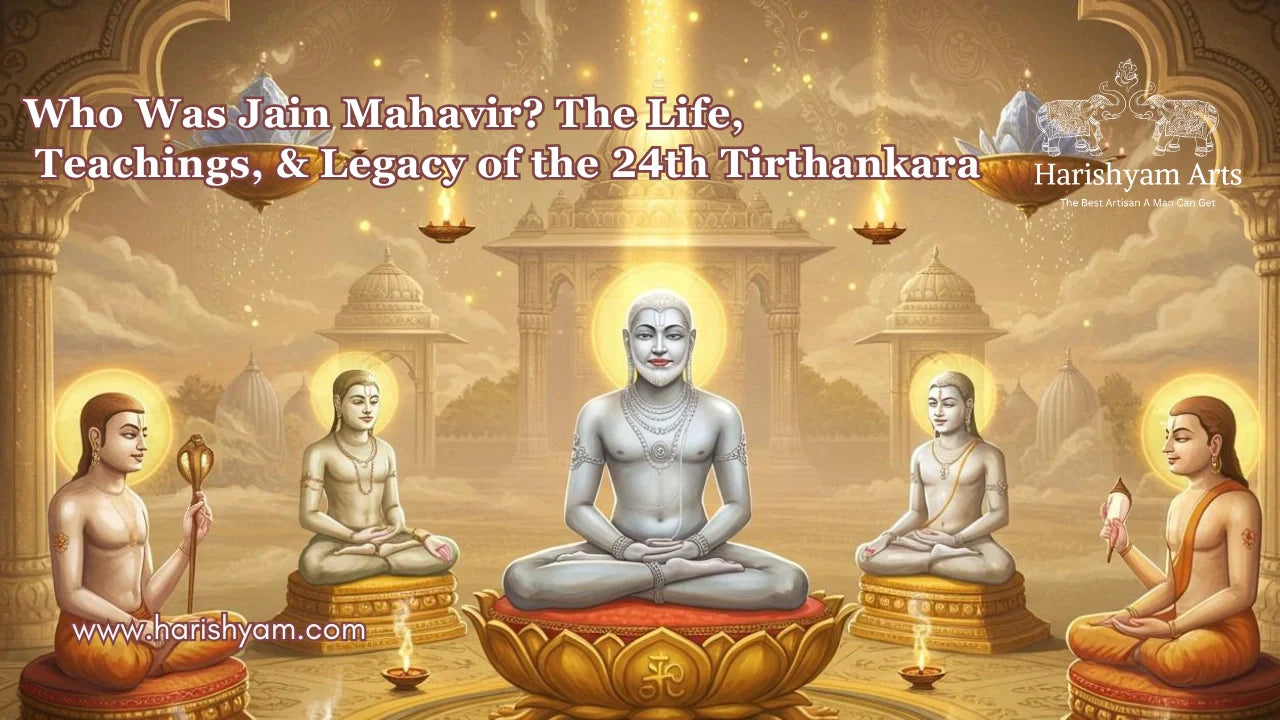
The 24 Tirthankaras of Jainism: Names, Symbols, and Significance
Lakshay Sharma | November 02, 2025
In Jainism, the Tirthankaras are revered as divine s...
Read More...
Top 25 Space-Saving Wooden Mandir Ideas for Modern Homes
Lakshay Sharma | November 01, 2025
A pooja mandir is the heart of every Indian home — a sacred corner where peace...
Read More...
What Are the 8 Forms of Lakshmi? | Ashta Lakshmi Meaning and Significance
Lakshay Sharma | October 31, 2025
The Divine Essence of Goddess Lakshmi
Goddess La...
Read More...
The Art of Craftsmanship: How Handmade Brass Statues Are Created
Lakshay Sharma | October 30, 2025
At Harishyam Arts, we celebrate the timeless beauty ...
Read More...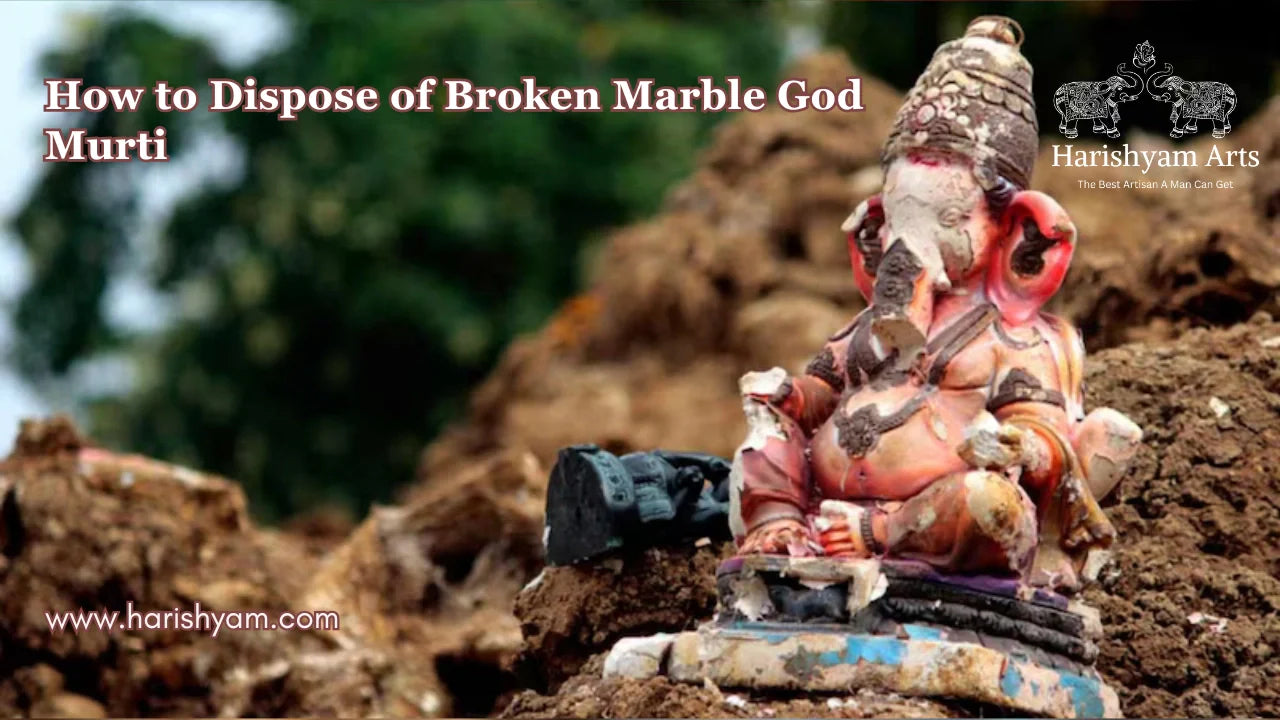
How to Dispose of Broken Marble God Murti
Lakshay Sharma | October 30, 2025
In Hindu tradition, marble murtis represent divine presence and spiritual ener...
Read More...
Wooden Statues vs Marble Statues: Which One Should You Choose?
Lakshay Sharma | October 29, 2025
When it comes to decorating your home or creating a sacred space, choosing the...
Read More...
How a Wooden Temple Enhances Positive Energy in Your Home
Lakshay Sharma | October 28, 2025
A home temple isn’t just a decorative corner — it’s the spiritual...
Read More...
Why Lord Krishna is Worshipped in Different Forms Across India
Lakshay Sharma | October 27, 2025
Lord Krishna — the eighth incarnation of Lord Vishnu — is one of the most belo...
Read More...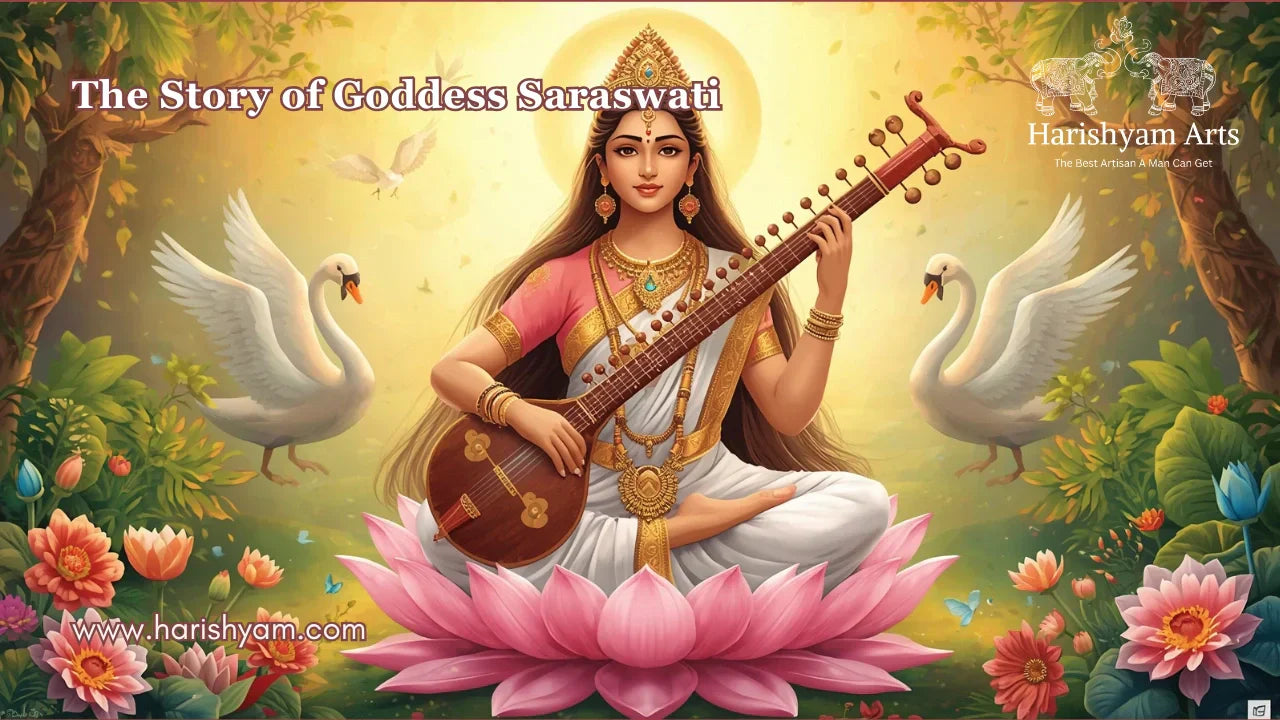
The Story of Goddess Saraswati: The Embodiment of Wisdom and Knowledge
Lakshay Sharma | October 26, 2025
Among the many deities of the Hindu pantheon, Maa Saraswati Read More...

Top Reasons to Choose Brass Statues for Home Décor and Spiritual Spaces
Lakshay Sharma | October 25, 2025
Home décor today is not only about beauty—it’s about creating a peaceful and m...
Read More...
How long do Corian temples last?
Lakshay Sharma | October 24, 2025
Choosing the right material for a temple at home is important for both aesthet...
Read More...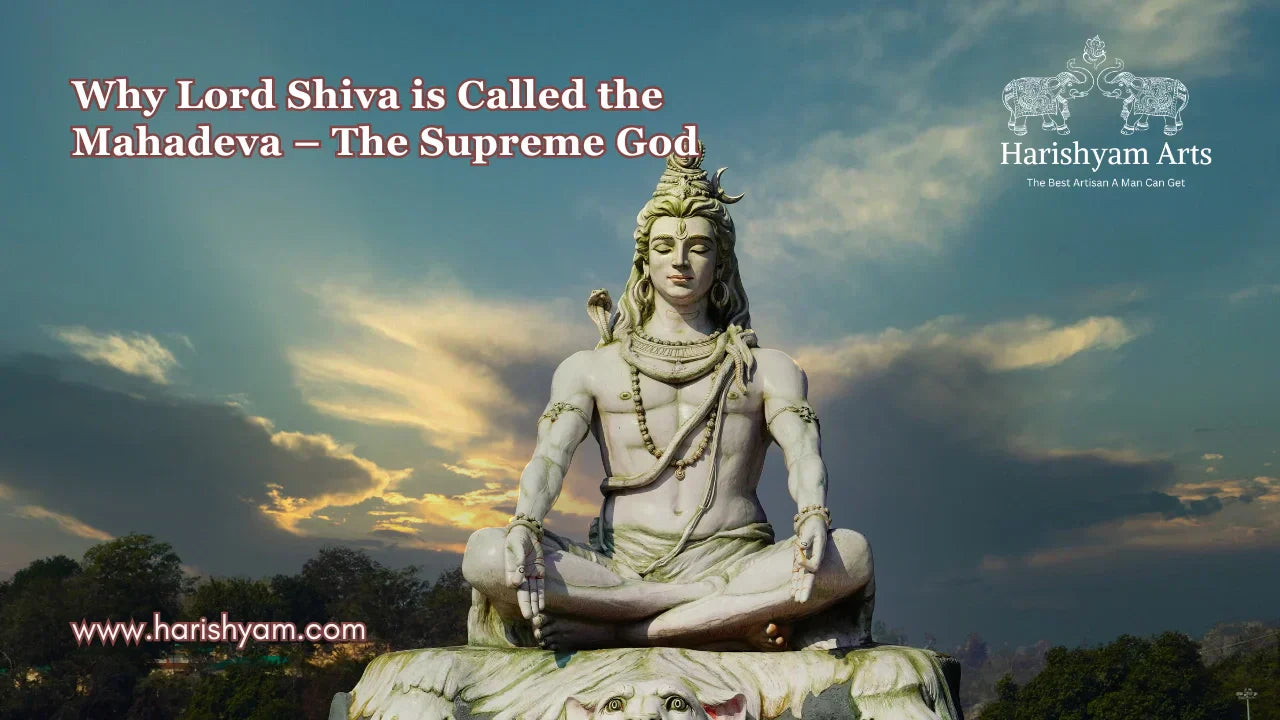
Why Lord Shiva is Called the Mahadeva – The Supreme God
Lakshay Sharma | October 23, 2025
Hinduism, one of the world’s oldest religions, has a rich pantheon of deities,...
Read More...
Why Corian Temples Are Becoming Popular in Contemporary Homes
Lakshay Sharma | October 22, 2025
In today’s modern homes, interior décor blends tradition with contemporary sty...
Read More...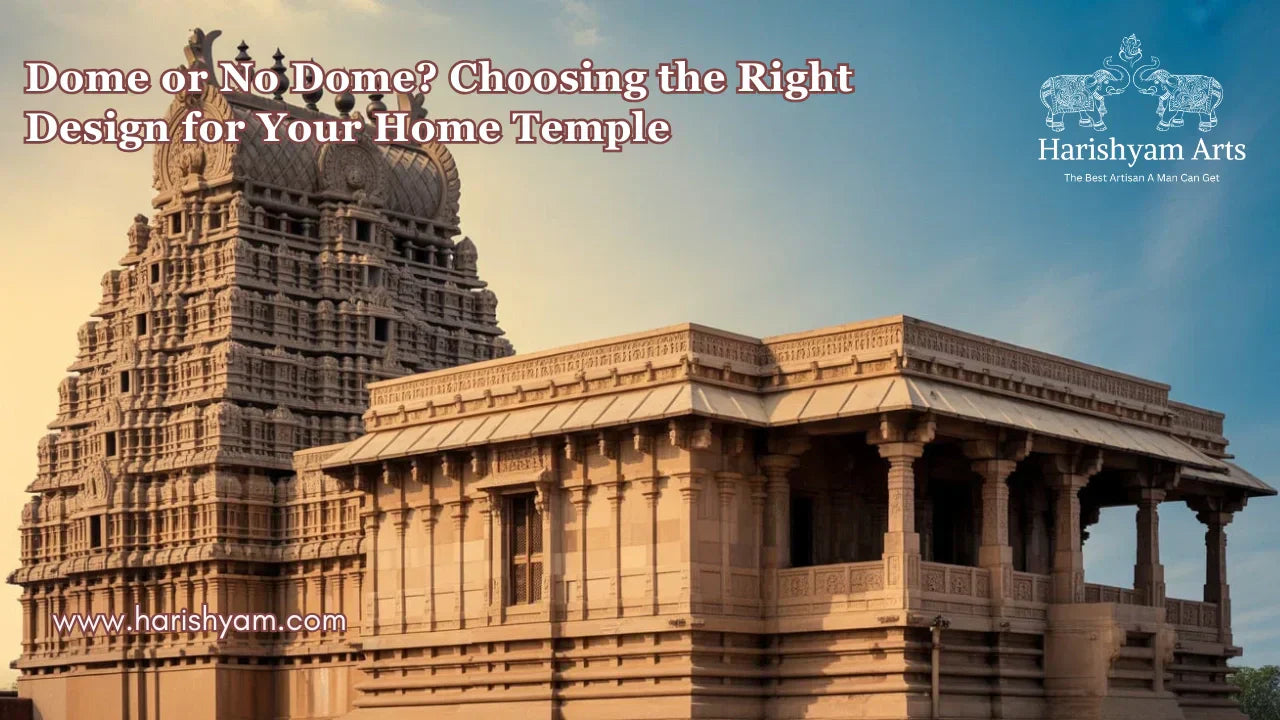
Dome or No Dome? Choosing the Right Design for Your Home Temple
Lakshay Sharma | October 21, 2025
Creating a sacred space at home is a spiritual investment, and the design of y...
Read More...
Traditional vs Modern Wooden Temples: Which Suits Your Space?
Lakshay Sharma | October 20, 2025
Creating a sacred space in your home is more than just interior décor — it’s a...
Read More...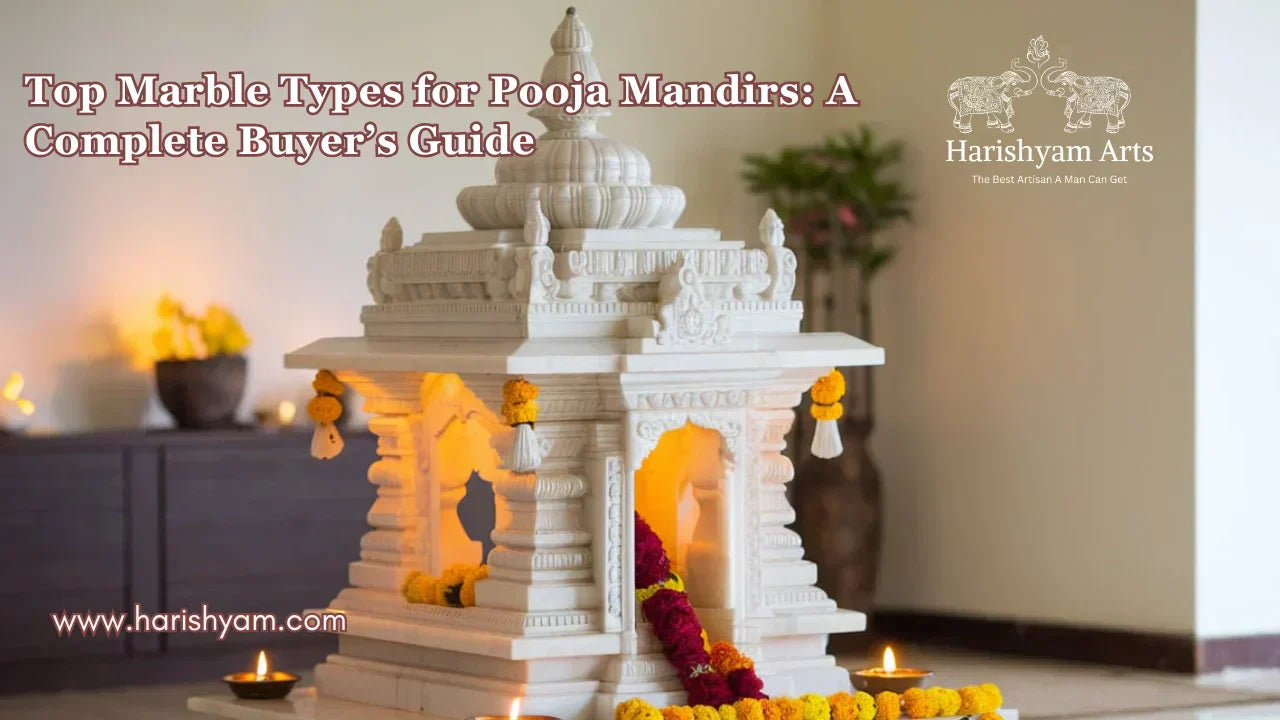
Top Marble Types for Pooja Mandirs: A Complete Buyer’s Guide
Lakshay Sharma | October 19, 2025
A Pooja Mandir is more than just furniture; it is th...
Read More...
The Different Forms of Shiva Statues and their Symbolism
Lakshay Sharma | October 18, 2025
Introduction to the God Shiva Statue
Lord Shiv...
Read More...
Guide to Choosing the Perfect Wooden Statue for Home and Office Décor
Lakshay Sharma | October 17, 2025
Wooden statues are more than decorative pieces—they are timeless symbols of ar...
Read More...
Understanding the Difference Between Handmade and Machine-Made Brass Statues
Lakshay Sharma | October 16, 2025
Brass statues have been a cornerstone of spiritual and decorative art for cent...
Read More...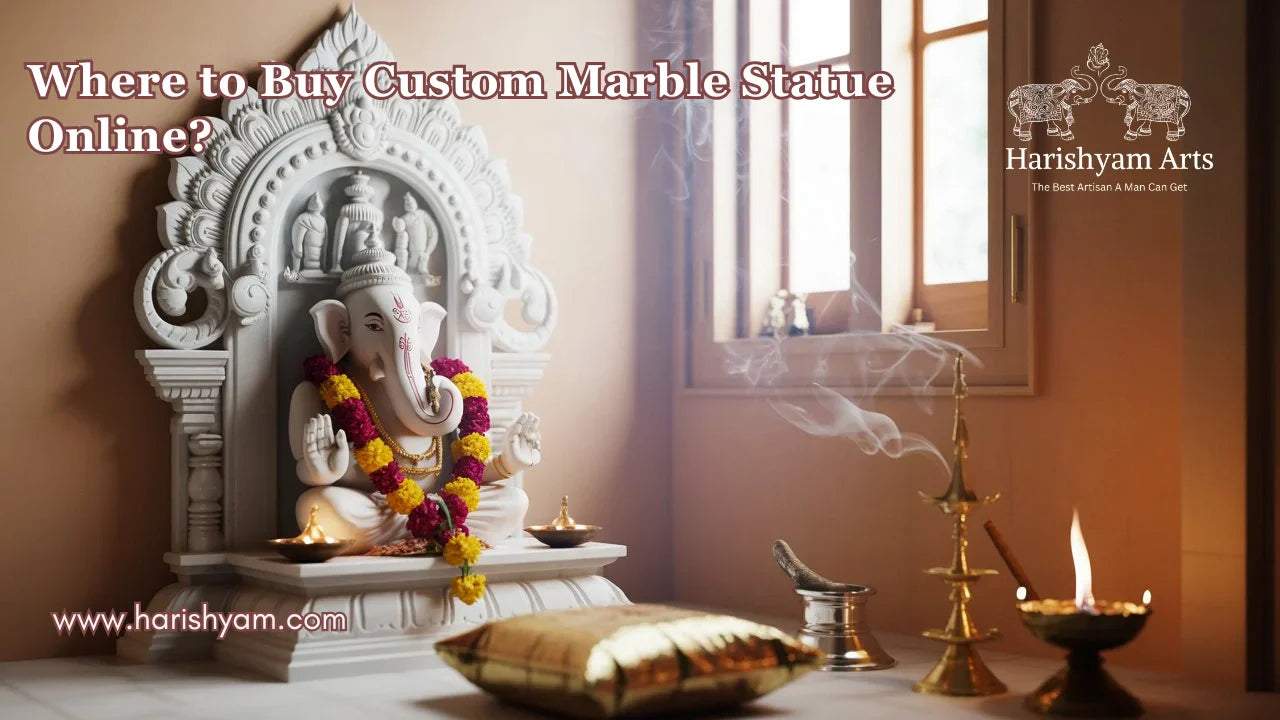
Where to Buy Custom Marble Statue Online? A Complete Guide
Lakshay Sharma | October 15, 2025
Marble statues have always held a special place in Indian homes and temples. T...
Read More...
Mistakes You Shouldn’t Make When Purchasing a Home Temple Online
Lakshay Sharma | October 14, 2025
Buying a home temple online can be an exciting experience — especially with so...
Read More...
Mistakes You Shouldn’t Make When Purchasing a Home Temple Online
Lakshay Sharma | October 14, 2025
Buying a home temple online can be an exciting experience — especially with so...
Read More...
How to Clean and Maintain Wooden Statues at Home
Lakshay Sharma | October 13, 2025
Wooden statues add elegance, tradition, and warmth to any home. From intricate...
Read More...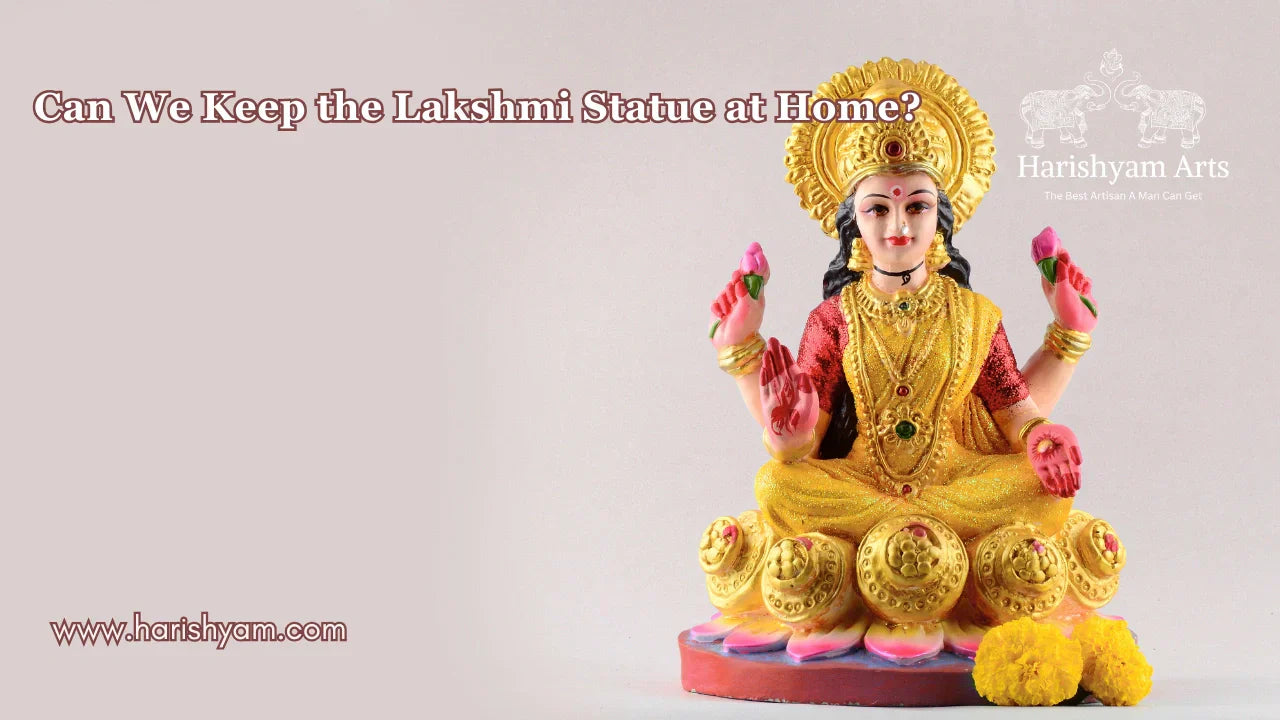
Can We Keep the Lakshmi Statue at Home?
Lakshay Sharma | October 13, 2025
In Hindu tradition, Goddess Lakshmi is worshipped as the divine force of wealt...
Read More...
How to Clean Brass Statues at Home?
Lakshay Sharma | October 12, 2025
Brass statues add a touch of elegance and spirituality to any home. At Harishy...
Read More...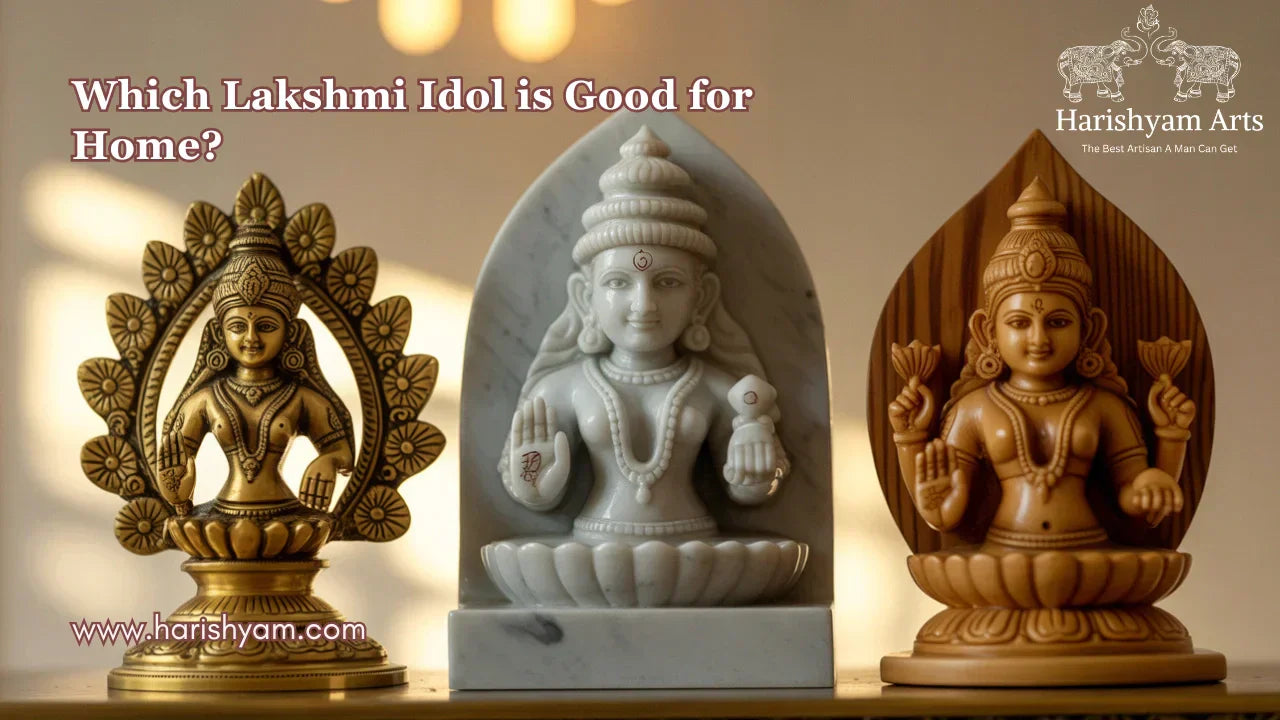
Which Lakshmi Idol is Good for Home? Types, Materials, and Significance
Lakshay Sharma | October 11, 2025
Goddess Lakshmi, the divine symbol of wealth, prosperity, and abu...
Read More...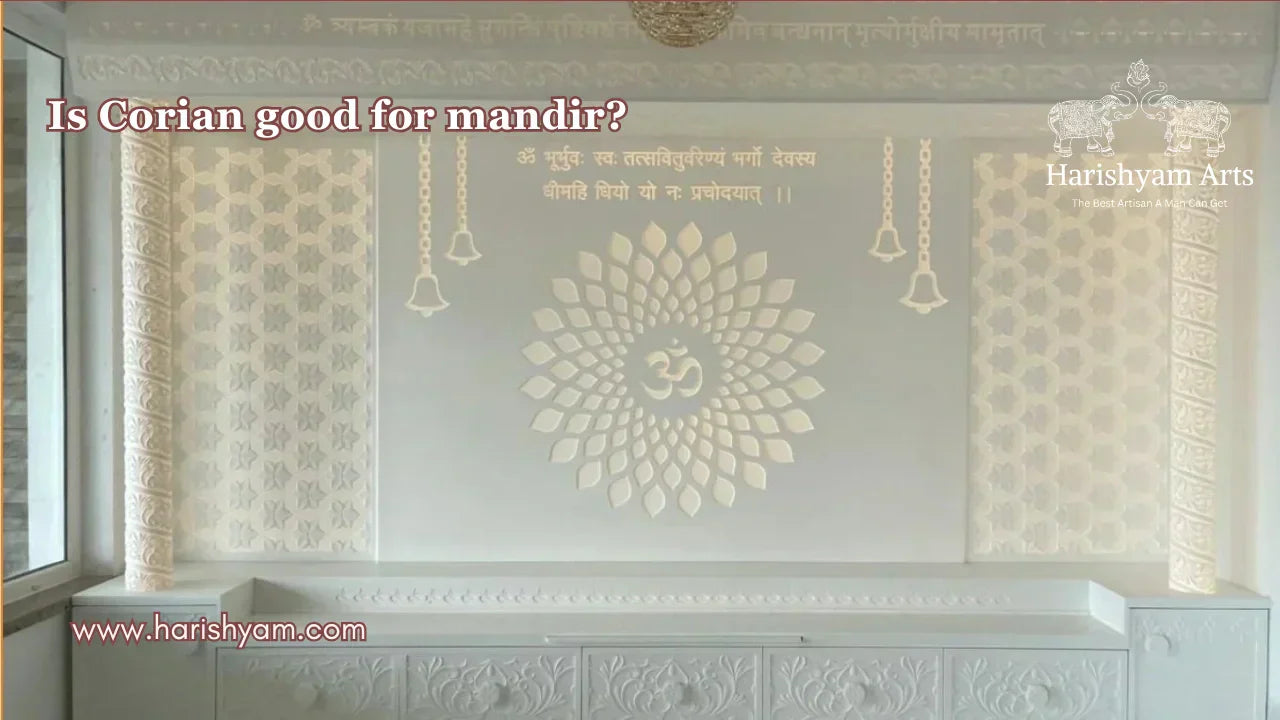
Is Corian Good for Mandir? A Complete Guide
Lakshay Sharma | October 10, 2025
When it comes to designing a home mandir, choosing t...
Read More...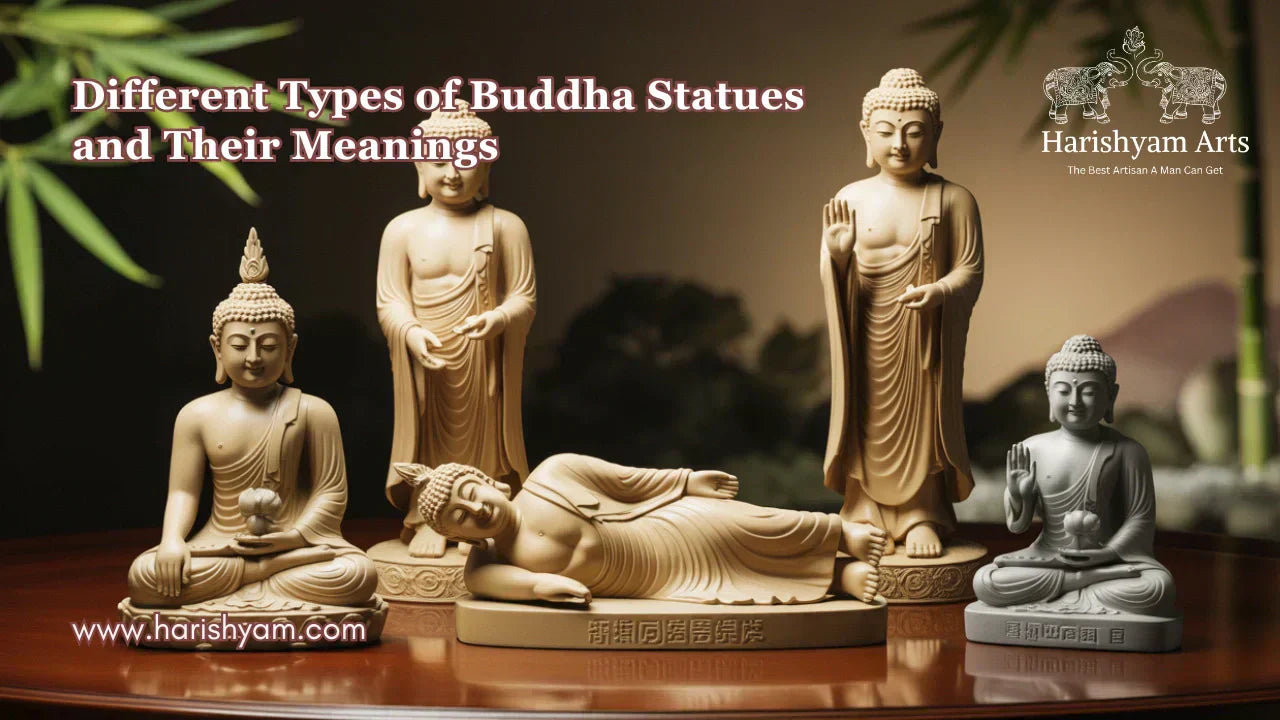
Different Types of Buddha Statues and Their Meanings
Lakshay Sharma | October 09, 2025
Buddha statues are more than just beautiful decorative pieces—they symbolize s...
Read More...
How to Identify a Real Habur Stone? A Complete Guide
Lakshay Sharma | October 08, 2025
Habur stone, known for its mysterious ability to turn milk into curd naturally...
Read More...



